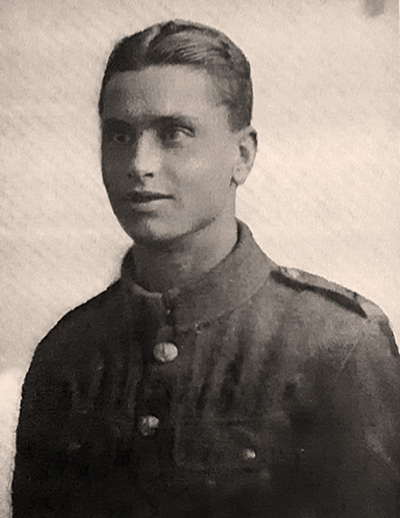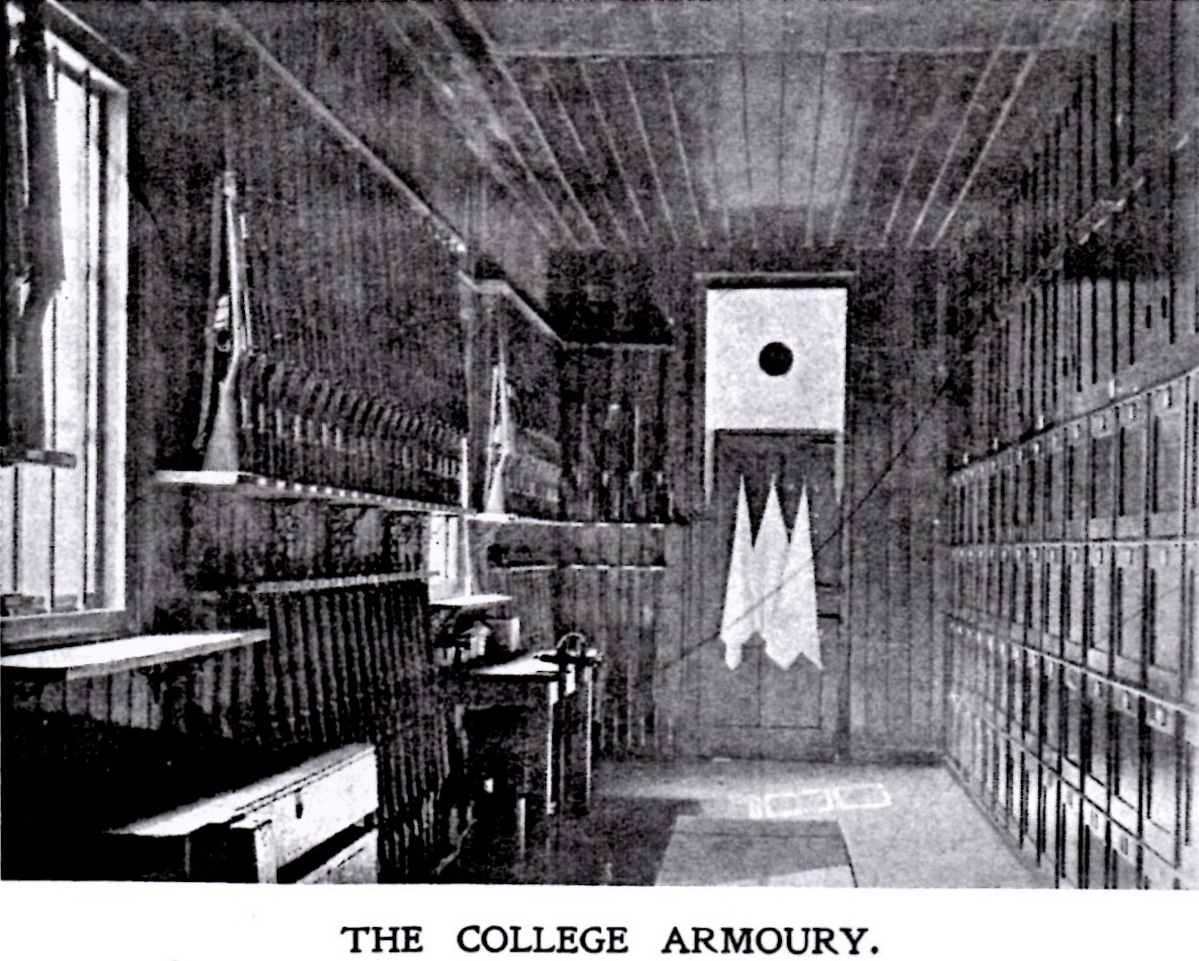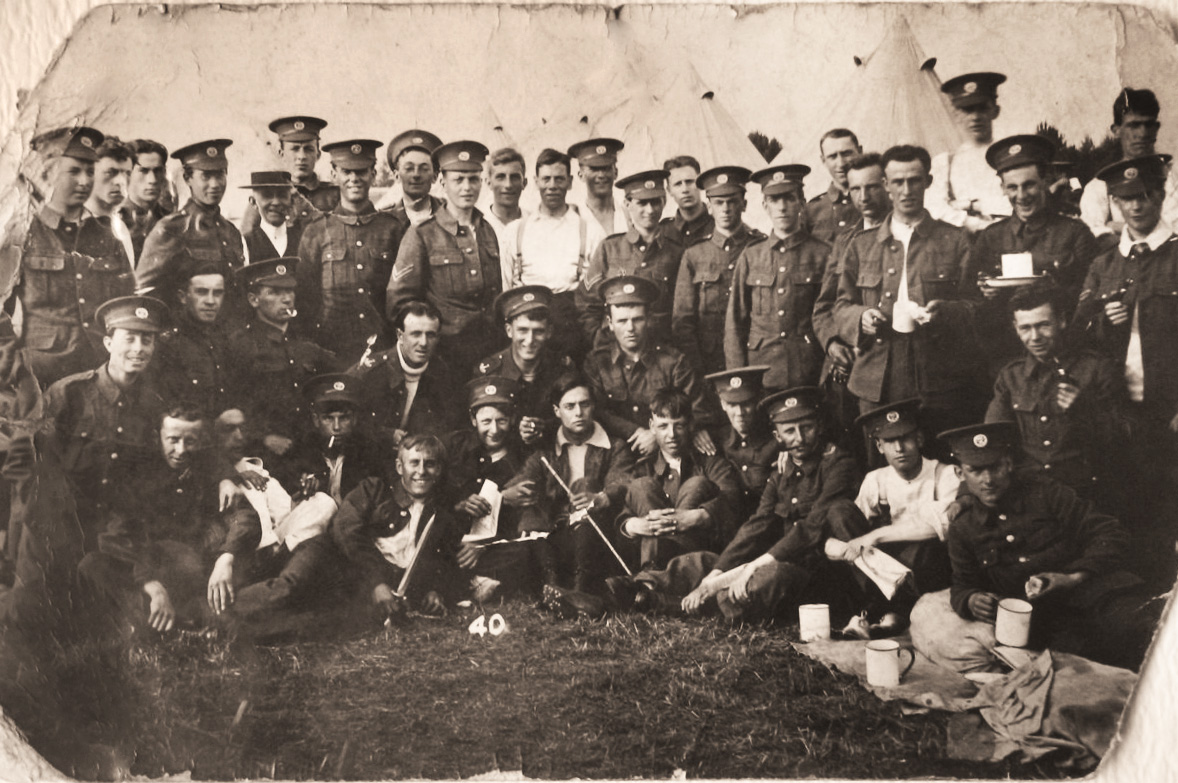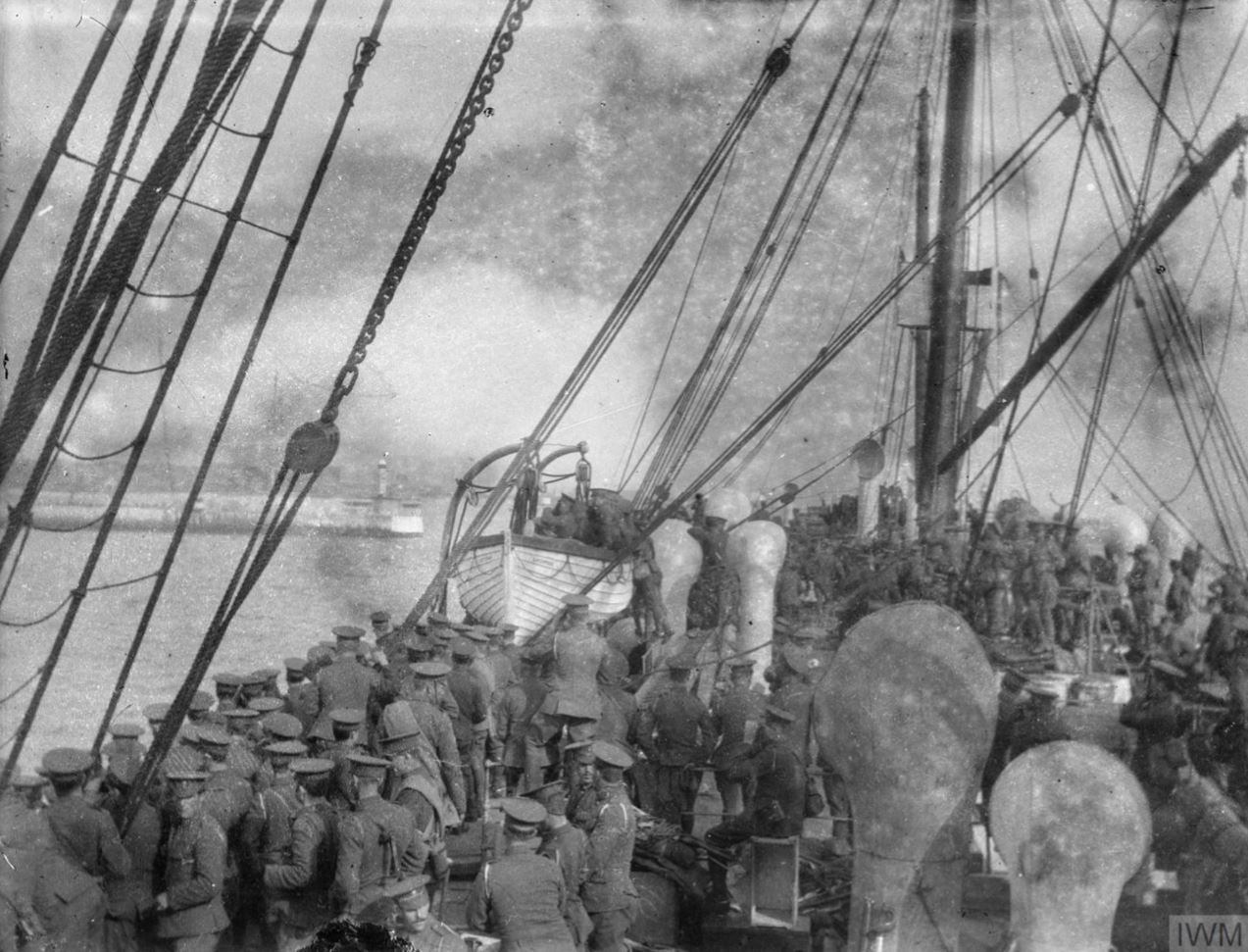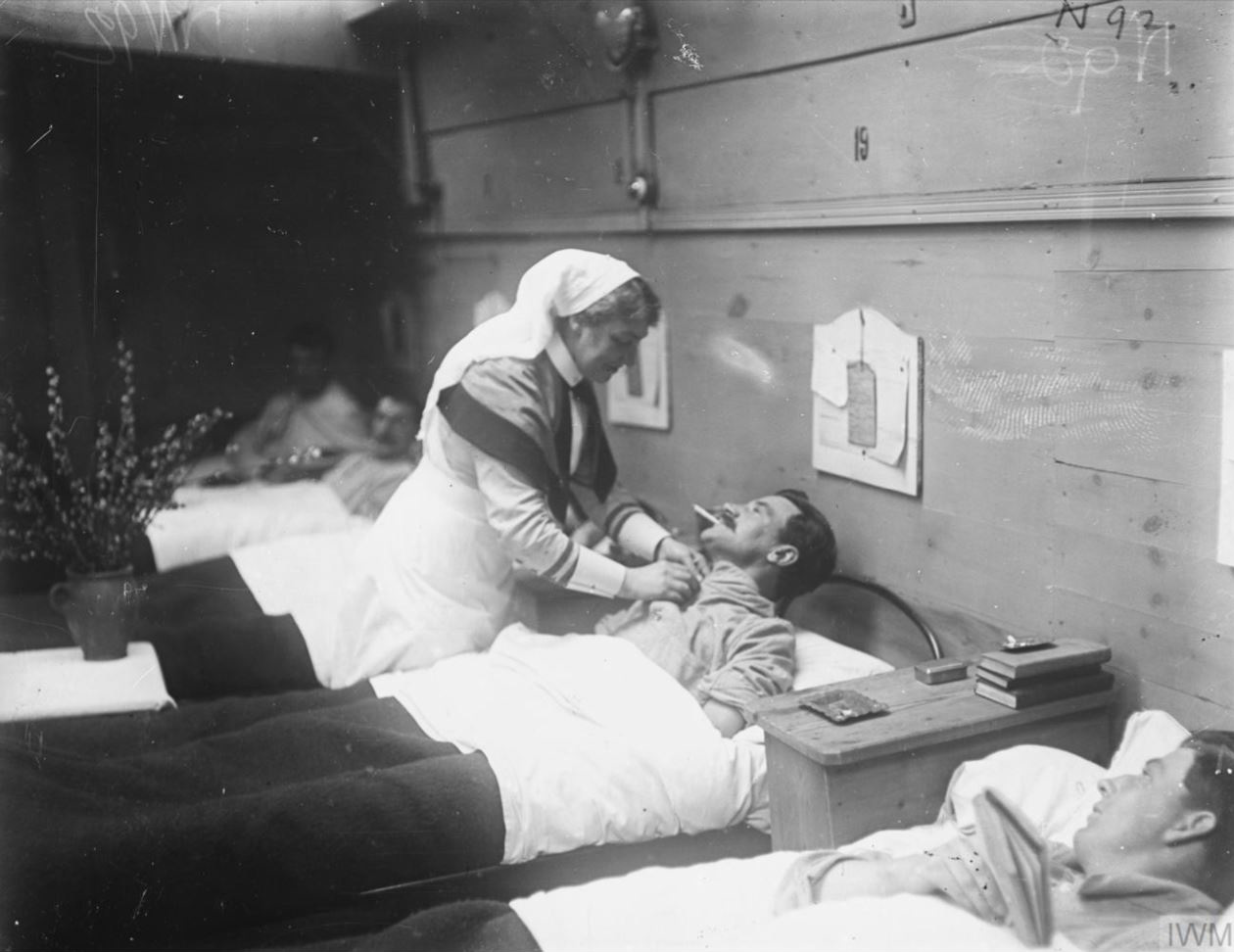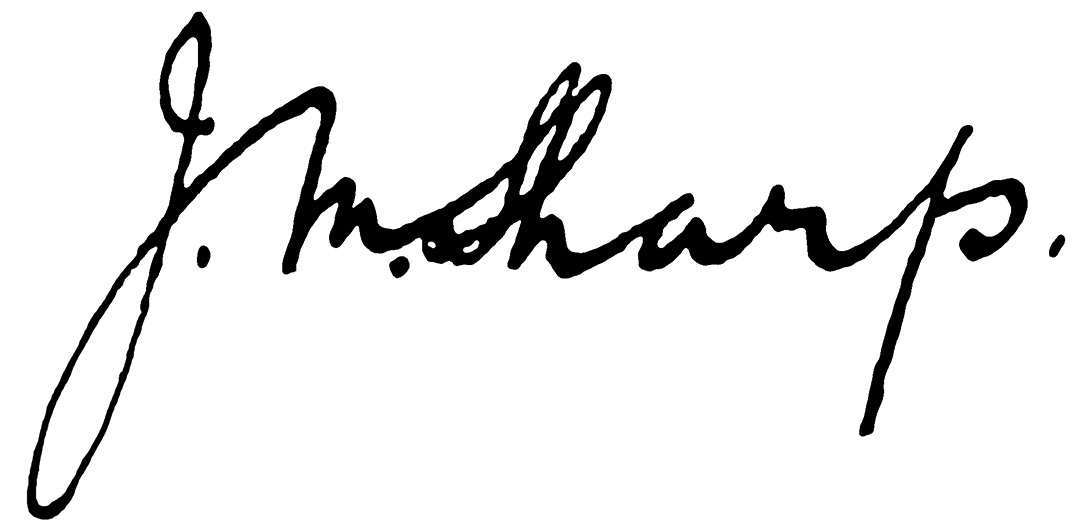Joseph Martin Sharp
24th February 1894”29th April 1918
Lance Corporal Joseph Martin Sharp, 306930 of the 2/8th later 2/7th Battalion, Warwickshire Regiment, died of wounds on 29th April, 1918.
The Sharps of London
By the time of Joseph Martin’s birth, the Sharps were firmly settled as an East End of London family. However, on his father’s side of the family, Joseph’s great grandparents and grandparents were fenland folk. Hailing from Cambridgeshire,1 they were agricultural labourers by trade. His grandparents had made their way to London in the early 1860s, to settle in the West Ham area, just north of the recently-opened Royal Docks. It was here that his grandfather and father would work in the physically demanding job of coal heavers: manually off-loading coal ships”exhausting, dirty, and dangerous work that was also hazardous to health.
His forebears’ names have not been mentioned yet, and for good reason: Joseph Martin was the third generation of the family to carry those names. His father and grandfather were both Joseph Martins.2 For the sake of clarity, only our subject will be called by name.
His father and mother married on December 20th, 1888 in the parish church of Bromley St. Leonards,3 Tower Hamlets. By this time, his fifty-four-year-old grandfather had left coal-heaving and appears on the Marriage Certificate as a greengrocer. Joseph’s mother was Annie Maria, daughter of a boilermaker, born 1861 in nearby Limehouse. Annie’s side of his family were East End through and through; Limehouse, Poplar, Stepney, Bromley-by-Bow, and Spitalfieds were their haunts.
The first of their children4 was born a year later. Joseph and his siblings are
Florence Ethel, b.1889 West Ham
Rose, b.1891 Woolwich
Joseph Martin, b.1894 Woolwich
Rebecca Eliza, b.1896 Woolwich 5
Grace Lillian, b.1899 Plaistow
The extended family was large: Joseph and his siblings had thirteen bloodline aunts and uncles.
Joseph’s father, Joseph Martin, was a coal heaver (1881), general labourer (1901 and 1911 ” the 1891 Census is missing), and Undertaker’s Assistant (1913 college records). From what is an economically and socially unassuming background, the possibility of a move into one of the professions would seem unlikely, and yet this is precisely what Joseph achieved.
What we know of Joseph’s schooling is taken from his later college Student Record. He attended Balaam Street School, Plaistow, where he received his primary education. The school was set on a busy commercial street, with almost every address being a shop or small business. Balaam Street is the oldest of the Plaistow and West Ham thoroughfares. Dating from the 12th Century, it was known as Balostret in 1371. The school, founded in 1844, had moved to new buildings two years before Joseph started. It was a Board (i.e. local authority) school, providing non-sectarian education’.
In 1906, he moved up West Ham Central Secondary School and he would have been in the first intake of 369 pupils at this new school. It was a mixed school, on the junction of Whalebone Lane and Tennyson Road, and had a projected capacity of 680. The ratio of first intake to full capacity indicates that the new pupils comprised children from upper elementary school years (11“15s), so it is likely that Joseph started in the second-year class (Year 8 today).
At some point in his schooling, Joseph must have been encouraged to take up teaching as a career. There were two routes into teaching at this time. The first, recently introduced, way was to apply for a bursary to complete education to age 18 at secondary school, perhaps take an optional one-year unqualified student teaching post, and then go to training college. The more established way, which was rapidly being phased out, was to leave school at 16 and take a one- or two-year pupil teacher post, then possibly an unqualified assistant teacher post, before going to training college. Both paths required passing examinations before college application could be made. Joseph chose the latter course and was appointed as a pupil teacher at Hermit Road Council School, West Ham.
Despite being restricted by law to 20 classroom hours per week, life for the pupil teacher was busy. It was the headmaster’s responsibility to ensure that personal tuition was provided to the trainee both before and after the school day. There were regular inspections of performance and work, and courses to attend. These were arranged on a day-release and evening class basis and held in a local Pupil Teacher Centre. Joseph’s local centre was in a familiar setting: West Ham Central, which he had just left. Two older centres had been amalgamated and rehoused on the new school site.
Joseph completed two years as a pupil teacher and was then appointed as an unqualified assistant teacher for one year, still at Hermit Road School. During this final year he sat and passed the exam that would enable him to apply for a training college place: the Preliminary Examination for the Certificate. He applied for a place at Winchester Training College and was accepted. In early September 1913, at the age of 19, he travelled from the East End of London to leafy Winchester, to begin a two-year course.
Training at Winchester Training College
1913-1915
The college records leave no trace of Joseph in his time there. We do have his signature from signing-the Students Register on arrival (see the end of this narrative), but nothing else.
College life, although very busy, was appreciated by the students. Many who passed through its doors would later join the Winton Club”a society of Alumni who would meet from time to time. Although centred on reunions in Winchester to begin with, small geographical expressions of the Club sprouted in various locations, enabling far-flung students to meet more often. The camaraderie and friendships built during study were special, as were the memories of shared times. The essence of this strong tie is encapsulated in a Government Inspector’s report of the church-run colleges, such as Winchester:
most excellent work has been done by the residential colleges, and the peaceful college life, the college routine and discipline, the esprit de corps, the college chapel are great advantages. Moreover, it is not generally known how good the lectures and teaching are.’6
Joseph’s marks in examinations show him to be an able student. At Christmas of his first year he was placed at 15th of the 46 students in his year, with an average of 63.4%. He showed particular strengths in Science (4th), Geometry (2nd) and Drawing (7th).
For Joseph and many of his fellow students, life in Winchester would not only be lectures, chapel services, sports and social events; the military was an integral part of College life.
His Army record includes an enlistment date of 16th September, 1913, in Winchester. This coincides with the beginning of his course. Most students during their time at College, enlisted as Territorials in the College Company: B Company of the 4th Territorial Battalion of the Hampshire Regiment. The enlistment date shows that Joseph was one of the members of B Company.
Periods were allotted in the weekly timetable to allow for drill, parades and rifle practice. The College had its own Armoury, where rifles and ammunition were stored, and a shooting range on a College field at Teg Down. Principal Wainwright held the rank of Captain and one of the tutors was a Lieutenant.7
Britain declared war on Germany at 7pm on the 4th of August, 1914, and we can reliably deduce from Army records that Joseph enlisted for wartime service in that same month.8 He therefore only completed the first of his two years at College.
Joseph in The Army
At the outbreak of War, B Company were on the annual camp at Bulford, Salisbury Plain. At the time it comprised some 104 men of which 40 were Seniors (second year students).
When war was declared, B Company were;
immediately mobilised and remained under canvas at Bulford for several weeks. 9 They were joined by Principal Wainwright, who held the rank of Captain, and by Bernard Goddard, one of the tutors, who was a Lieutenant in the Company. Early in September the Company returned to Winchester and were billeted in the college buildings, the War Office paying the college 3d. a night for each man and supplying each with rations.’ 10
Most of the College men who were at camp were transferred into the 1/4th or 2/4th Battalions of the Hampshire Regiment. These men went, via India, to fight against Ottoman forces in the Middle East: Egypt, Palestine (2/4th)11 and, mainly, Mesopotamia (1/4th).
4th Hants Territorials on camp. Joseph sent this to his family with a handwritten message on the back: I want to keep these so put them safe.’ Image courtesy of E. Wilson
Joseph did not join the majority of his college friends in India. He may, along with at least one other former student,12 have been transferred to the 3rd (Reserve) Battalion. This was formed in August 1914 in Winchester, as a depot/training unit and remained in UK throughout the war. Moved on mobilisation to Parkhurst (Isle of Wight) and in January 1915 to Gosport for duty with Portsmouth Garrison. It also served as a reserve and sent replacement men to other Regiments, that had become depleted through casualties or otherwise had a need of more men.
Troops preparing to disembark at Le Havre. ©IWM Image Q51128
The first active unit mentioned in his Army record is 2/8th Battalion Warwickshire Regiment. On the morning of Sunday, May 22nd 1916, the Battalion left their camp at Perham Down in Wiltshire, marching the short distance to entrain at Ludgershall station, en route to Southampton. As Joseph began his journey to the Western Front, it is comforting to know that he would be with friends: fellow WTC students Albert Lewis and Merton Rose were also making the same journey. All three had overlapped at college in the 1913-1914 academic year. At 7pm, 23 Officers, 855 Other Ranks boarded the paddle steamer Princess Clementine at Southampton Dock, bound for Le Havre, landing there the next morning at 3am. They had landed in France as part of the 182nd (2nd Warwickshire) Brigade in the 61st (2nd South Midland) Division, heading towards enemy lines.
Joseph’s war was, like many others, a long one. His Battalion were engaged in various actions on the Western Front including;
The Attack at Fromelles, July 19-20th 1916
The Operations on the Ancre, 13-18th November 1916
The German Retreat to the Hindenburg Line, 14th March to 5th April, 1917
The Battle of Langemarck, 16-18th August 1917
The 2/8th Battalion was disbanded on 20th February, 1918, and Joseph was transferred to 2/7th Battalion Warwickshires. No great change would result from this transfer as both Battalions were part of 143rd Brigade, 48th Division, having fought in the same actions. His war continued unabated:
The Battle of St Quentin, 21-23rd March 1918
The Actions at the Somme Crossings, 24-25th March 1918
The Battle of the Lys, 7th April 1918 on
The Battalion War Diary carries a short note on April 1st, 1918: Men worn out through recent active operations’. They had just come through a torrid time: in the previous three days they had lost 82 men”roughly one in ten. They were relieved for re-equipping, cleaning equipment, and rest. On April 11th they were thrust back into action at Calonne-sur-Lys”part of the larger Battle of the Lys.
Throughout April 12th and 13th, they suffered heavy casualties as a strong enemy attack was repelled: 5 Officers and 43 Other Ranks. After this attack, the conflict turned into exchanges of heavy artillery bombardments each day, with some gas shelling from the enemy on the 22nd. The 24th and 25th saw a lot of enemy aircraft activity over the trenches.
On April 25th Joseph was injured, though whether from aerial bombing, gas, or artillery fire is not known. On that day the Battalion HQ had received a direct hit from an artillery shell resulting in 18 unspecified casualties. He was a Company Clerk and an able translator”roles which would have frequently taken him to Battalion HQ”so perhaps this may have been when he was injured. Joseph was taken, probably by hospital barge, to Fort Gassion (39th Stationary Hospital), Aire-sur-Lys. He succumbed to his wounds 4 days later.
Joseph lies buried with many fellow soldiers who died in the hospital, in Aire-sur-la-Lys Cemetery.
Researcher and Author: John Vickers
Footnotes
[1] His grandmother Ellen Sharp was from the Lincolnshire fens: born in Deeping in 1842.
[2] Father Joseph Martin Sharp, b.1865, Canning Town, Essex. Grandfather Joseph Martin Sharp, b.1834 at Sutton, Isle of Ely, Cambridgeshire. His great-grandfather was William Sharp, b. 1793 in Godmanchester, Huntingdonshire, on the western fringes of the fens.
[3] Sometimes called Bromley-by-Bow
[4] This is assumed. The 1911 Census records that, in addition to the five children who appear in records, there was a sixth otherwise unrecorded child who had died at some time before April 1911. It is possible that this was the first child of the union.
[5] Rebecca Eliza married an Australian Sapper, Harold Leslie Mackarell, of the Australian Imperial Force on 21st June, 1919, and emigrated to Austrailia. She made at least two visits back to England, in 1920 and 1950. She died in 1985 at Surrey Hills, Victoria, Australia
[6] HMI Oakley, quoted in A History of King Alfred’s College, Winchester 1840-1980 by Martial Rose, p.75
[7] Bernard Goddard, student 1897-1900 and Tutor 1900-1934. He was also Secretary of the Winton Club.
[8] Although we do not have a date for this, his entry in an Army ledger, listing the monies due to the families of deceased men, tells us that his estate was due a War Gratuity payment of £21 10s (shown in the ledger as £17.10s because it is net of his Service Gratuity of £4 0s for between 37 and 48 months service). The War Gratuity is for his length of service up to the date of death. The minimum Gratuity paid to any Private, Lance-Corporal, Lance-Bombardier or equivalent rank’ was £5 0s which covered the first 12 months of service. To this sum was added monthly increments:
Soldiers who have completed more than 12 calendar months’ war service will receive, in addition, the following sums in respect of each complete calendar month or portion of a calendar month of war service beyond the 12 months, subject to a maximum addition of 48 such monthly increments, corresponding to a total gratuity covering 5 years’ war service:”
(a) If with any war service overseas, 10s
(b) If with no such service, 5s’
His War Gratuity therefore represents 3 years 9 months service: the £5 minimum payment for the first 12 months plus 33 further months at 10s. Calculating back from his date of death gives a resulting enlistment date of August 1914. Gratuities were calculated and disbursed after the War had ended. Joseph’s Gratuity assessment was made on 18th September, 1919.
Source: Army Order 17 of 1919. (Although this post-dates Joseph’s death, the provisions of this Order were for all soldiers who had served in the War.)
[9] They were moved to Hilsea, Portsmouth, from August 4th to 10th before returning to Salisbury Plain, where they trained at Bulford, Sling Plantation, Hamilton and Bustard Camps. They moved to the College billets on October 5th. Source: College War Supplement, June 1916
[10] A History of King Alfred’s College, Winchester 1840-1980 by Martial Rose, p.66
[11] In May 1918, after Joseph’s death, they were moved to the Western Front where they finished the War.
[12] William Richard Parsons d.3rd April 1917
[13] Army Form B103. He would have passed through the various stages of caring for wounded men: (1) First Aid Post, (2) Field Ambulance/Dressing Station, (3) Casualty Clearing Station, (4) Base or Stationary Hospital. The Casualty Clearing Station was the first point at which major medical intervention was available (amputations and other operations).
Sources
Ancestry (2018). Home page. [online] Available at: www.ancestry.co.uk [Accessed 2018].
British History Online (1973). A History of the County of Essex: Volume 6: West Ham: Education, pp.144-157. [online] Available at: http://www.british-history.ac.uk/vch/essex/vol6/pp144-157 [Accessed 19 July 2018].
Commonwealth War Graves Commission, (2018). Home page. [online] Available at www.cwgc.org/ [Accessed 2018].
Imperial War Museum (2018). A nurse attends to a soldier in a ward on a hospital barge near Aire, 15 February 1918, Q 10666. [online] Available at: https://www.iwm.org.uk/collections/item/object/205246344 [Accessed 2018].
Imperial War Museum (2018). Soldiers of the 11th Hussars Regiment (Prince Albert’s Own) on board a ship arriving at Le Havre. 16th August 1914, Q 51128. [online] Available at: https://www.iwm.org.uk/collections/item/object/205022645 [Accessed 2018].
The Long Long Trail, (2018). British Base Hospitals in France. [online] Available at: http://www.longlongtrail.co.uk/army/regiments-and-corps/british-base-hospitals-in-france/ [Accessed 2018].
Rose, M. (1981). A history of King Alfred’s College, Winchester 1840-1980. London: Phillimore.
Vickers, J. University of Winchester Chapel Memorial Rail image.
Wilson, E. Photographs of J.M. Sharp from private collection. Personal contact.
| University of Winchester Archive “ Hampshire Record Office | ||
| Reference code | Record | |
| 47M91W/ | P2/4 | The Wintonian 1899-1900 |
| 47M91W/ | P2/5 | The Wintonian 1901-1902 |
| 47M91W/ | P2/6 | The Wintonian 1903-1904 |
| 47M91W/ | P2/7 | The Wintonian 1904-1906 |
| 47M91W/ | P2/8 | The Wintonian 1905-1907 |
| 47M91W/ | P2/10 | The Wintonian 1908-1910 |
| 47M91W/ | P2/11 | The Wintonian 1910-1914 |
| 47M91W/ | P2/12 | The Wintonian 1920-1925 |
| 47M91W/ | D1/2 | The Student Register |
| 47M91W/ | S5//5/10 | Photograph of 5 alumni in Mesopotamia |
| 47M91W/ | Q3/6 | A Khaki Diary |
| 47M91W/ | B1/2 | Reports of Training College 1913-1914 |
| 47M91W/ | Q1/5 | Report and Balance Sheets 1904- 1949 |
| 47M91W/ | R2/5 | History of the Volunteers Company 1910 |
| 47M91W/ | L1/2 | College Rules 1920 |
| Hampshire Record Office archive | ||
| 71M88W/6 | List of Prisoners at Kut | |
| 55M81W/PJ1 | Managers’ Minute Book 1876-1903 | |
| All material referenced as 47M91W/ is the copyright of The University of Winchester. Permission to reproduce photographs and other material for this narrative has been agreed by the University and Hampshire Record Office. | ||


